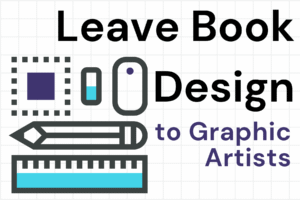Intelligence Isn’t Artificial

Image generated by Artificial Intelligence for this post.
As 2024 was drawing to a close and my income poised to decline slightly over 2023—amid fears that Artificial Intelligence is already eating freelancers’ lunch—I needed a good laugh.
I got one, thanks to a story in Time magazine about the basic errors in OpenAI’s new, advanced AI model. The company touted it as including “complex reasoning.”
In an accompanying video, a user uploaded a picture of a wooden birdhouse and asked for advice on building one. After a short time, the machine spit out comprehensive instructions.
However, writer Billy Perrigo noted that closer examination revealed the instructions were almost useless. Things like:
- AI measuring the amount of paint, glue, and sealant required in inches
- The only dimensions were for the front panel of the birdhouse
- A recommendation to cut a piece of sandpaper to another set of dimensions
- Another part of the instructions read that “the exact dimensions are as follows” – and nothing followed
“It’s just the latest example of an AI product demo doing the opposite of its intended purpose,” Perrigo wrote. “(In 2023), a Google advert for an AI-assisted search tool mistakenly said that the James Webb telescope had made a discovery it had not, a gaffe that sent the company’s stock price plummeting.”
Voting for Humans
Now, I realize that AI is here to stay. One assumes as the operators continue to refine their products, embarrassing errors will decline.
And yet, in this latest example pitting humans against machines, I can’t help casting my vote for humans.
For one, AI is developing its jones by allegedly stealing the work of real-life authors.
That was the claim in a class action lawsuit filed last August against Anthropic. The suit accused the company of stealing work by Stephen King, Michael Pollan, and others to compile its massive library of ebooks.
In addition, no matter how powerful the computers, microprocessors, and other tools driving AI, machines are still coming up against God’s most awesome creation: human beings.
Soon after the Time story, another freelancer included a link to “The Editor’s Brain” by copyeditor and proofreader Katherine Kirk.
While she wrote about the fiction editor’s brain, I think her comments apply to all who write or edit.

Image generated by Artificial Intelligence for this post.
Kirk noted that editors go through a series of steps for grammar and punctuation, consulting style guides, and conferring with publishers. All that is connected to a life of experience communicating with humans.
In addition, the editor’s mind is finely tuned to the way people actually speak, along with a sensitive “this doesn’t feel right” and “I’ve seen that before” awareness, she added.
While the AI folks think a machine can do this, Kirk contrasted the one they have fashioned with only 10 switches compared to “our infinity.
“They don’t even come close to the one in the editor brain,” she wrote. “Maybe one day they’ll get there, but the thing is, since language is constantly evolving and the art of writing is forever innovating, I think AI is going to be playing catch-up for a very long time.”
Artificial Intelligence’s Foibles
Two weeks ago I came up against another example of the need for human fine-tuning of creative material. The head of a literary services agency emailed me to ask about my interest in helping an author craft her message into a salable book.
She had AI help with a rough draft, only to realize it’s not good enough to be published. She needs help with rewriting and adding color to the manuscript. Which goes to show that some creations need the touch of our Creator.




One Response
I feel this way about AI art. It take human experience and emotion to create art. When you look at AI art, or even AI assisted art it feels like something is missing. It’s the human element.
Comments are closed.